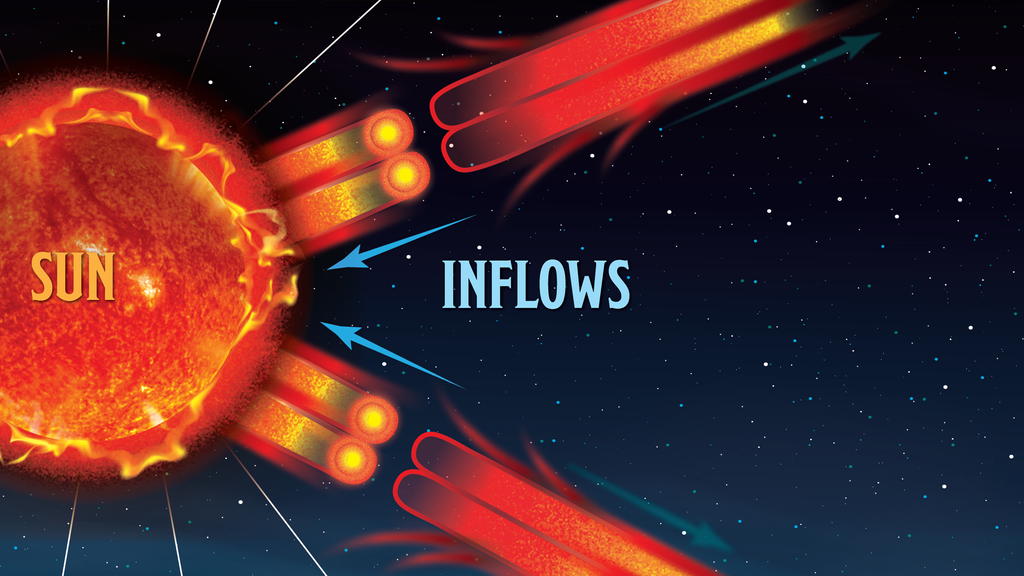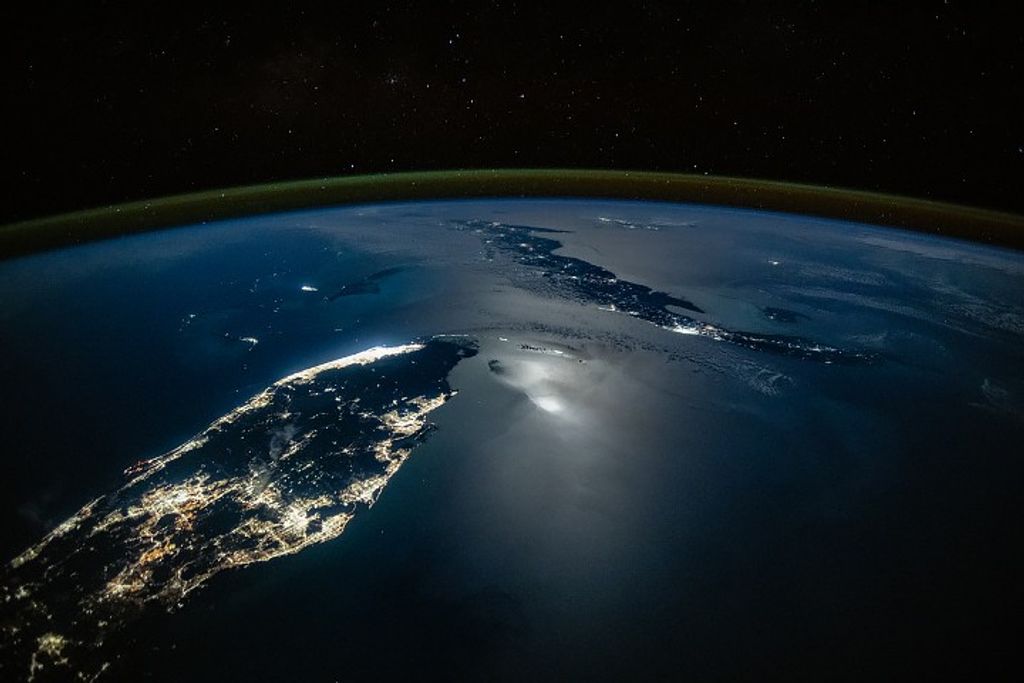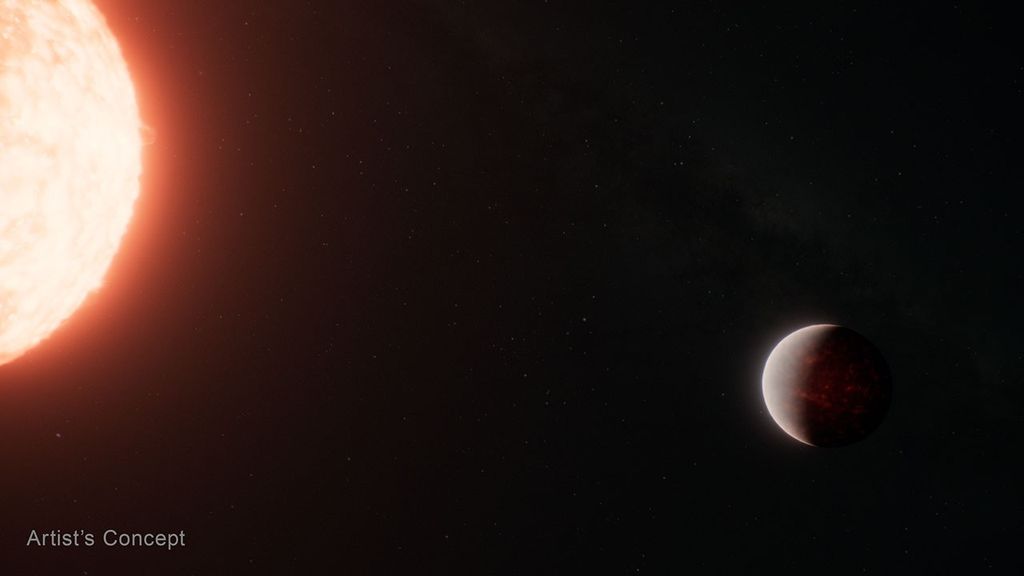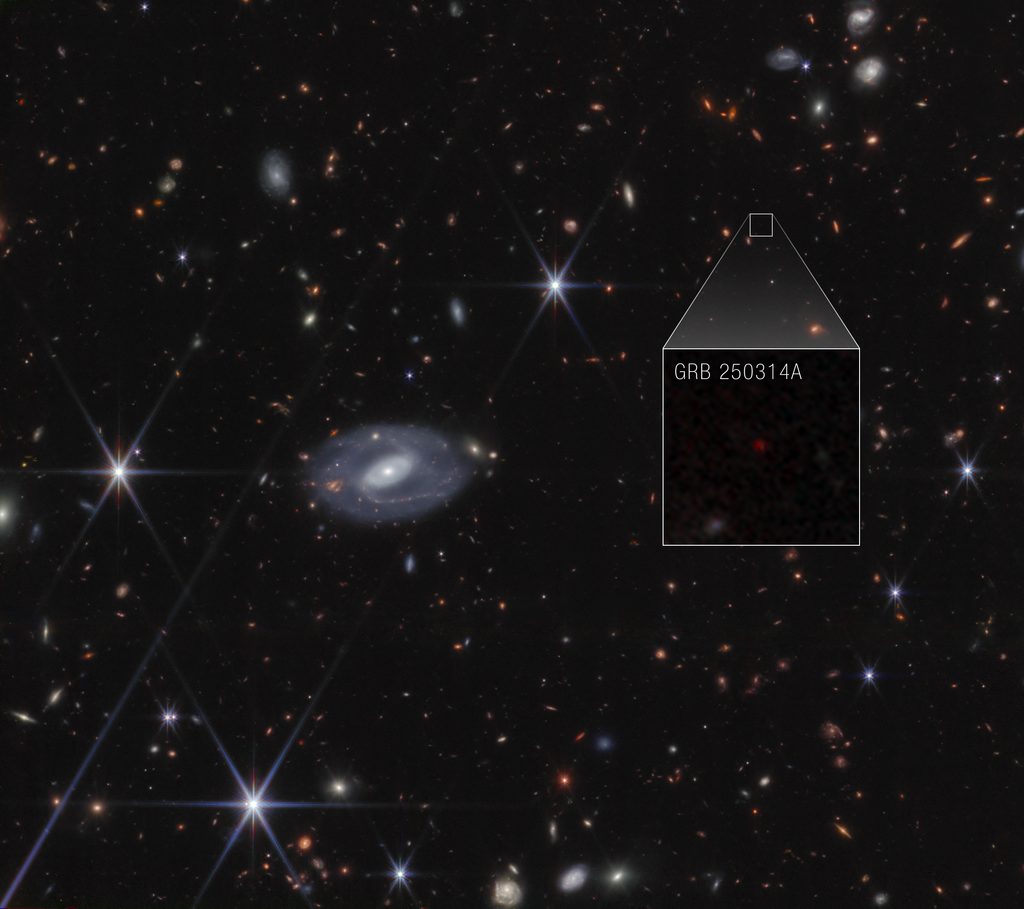Dramatic dark dust knots and complex structures are sculpted by the high-velocity stellar winds and high-energy radiation from the ultra-luminous variable star called Eta Carinae. This image shows a region in the Carina Nebula between two large clusters of some of the most massive and hottest known stars. This NASA Hubble Space Telescope close-up view shows only a three light-year-wide portion of the entire Carina Nebula, which has a diameter of over 200 light-years. Taken with Hubble's Wide Field Planetary Camera 2 in July 2002, this color image is a composite of ultraviolet, visible, and infrared filters that have been assigned the colors blue, green, and red, respectively.
1 min read
Hubble Photographs Turbulent Neighborhood Near Eruptive Star
A small portion of the rough-and-tumble neighborhood of swirling dust and gas near one of the most massive and eruptive stars in our galaxy is seen in this NASA Hubble Space Telescope image. This close-up view shows only a three light-year-wide portion of the entire Carina...
Related Images & Videos

Stellar Winds and Radiation From Eruptive Star Eta Carinae Sculpt Gas and Dust
A small portion of the rough-and-tumble neighborhood of swirling dust and gas near one of the most massive and eruptive stars in our galaxy is seen in this NASA Hubble Space Telescope image. This close-up view shows only a three light-year-wide portion of the entire Carina...

Ground-Based Image of Carina Nebula (NGC 3372)
This image shows the Carina Nebula (NGC 3372), combining the light from 3 different filters tracing emission from oxygen (blue), hydrogen (green), and sulfur (red). The color is also representative of the temperature in the ionized gas: blue is relatively hot and red is cooler....
Share
Details
Last Updated
Mar 20, 2025
Contact
Media
Claire Andreoli
NASA’s Goddard Space Flight Center
Greenbelt, Maryland
claire.andreoli@nasa.gov
Credits
NASA and The Hubble Heritage Team (AURA/STScI);
Acknowledgment: S. Casertano (STScI)






























